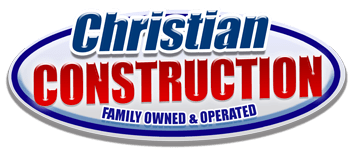New York weather has been wild, with sun then rain then wind and then back to sun again. As of this writing, it is about 80 degrees, and then two days from now it is going to be 58 degrees and pouring rain. This has been an unusual weather season for NYC.
During this time, it’s helpful to evaluate what the weather can do to your home in order to know what type of repairs or inspections may be needed. In this case, let’s talk about the role of heavy winds.
Heavy winds can pose a significant threat to the structural integrity of your home, especially to the roof which bears the brunt of weather extremes. Luckily, most roofing is designed to withstand this, but it is still important to pay attention what could happen in order to address it before it becomes a serious problem.
Assessing the Risk to Your Roof
Wind speed can theoretically affect the lifespan of your roof. Older roofs are going to have it worse than newer roofs, and thinner roofing materials – like asphalt shingles – are likely to bear more of the weather extremes than heavier and more durable roofing, like metal or ceramic.
The intensity and potential damage of wind do not solely depend on wind speed. Several factors influence how wind might affect a home:
- Roof Type and Shape – Certain roof types, like hip roofs, are more aerodynamically shaped to withstand high winds compared to gable roofs which have flat ends that are more susceptible to wind pressure.
- Material Quality – High-quality materials and construction are crucial for wind resistance. Older roofs or those made from less durable materials may face higher risks of damage. Asphalt shingles have classifications that help identify the likelihood of roof damage. Higher classes (D and E, for example) can withstand as much as 120MPH or more. C can withstand 90 MPH, and lower classes even less.
- Maintenance History – Regularly maintained roofs are less likely to incur wind damage. Neglected roofs can have weakened structures or loose materials that are easily picked up by wind.
- Surrounding Environment – Trees, landscape, and nearby structures can also affect how wind impacts your roof. For example, large, close trees can fall on roofs during heavy winds, causing severe damage.
Remember, though the wind can cause damage, it’s not always the wind that leads to the most damage. Sometimes, it’s the debris that blows off during rainy days. If you have a tree above your home, you’re at far greater risk even in slower windows (20+ MPH) than someone without a tree at higher wind speeds.
Overall, the risk to your roof has too many factors to identify the risk. But you can usually get a better idea of how risky high winds are for your roof.
Common Wind-Related Roof Damages
Should your roof experience damage, most of the time the roof as a whole will remain intact, but parts of it will experience damage. For example:
- Shingle Damage – Wind can lift or completely remove shingles from the roof, exposing the underlayment and possibly the roof deck to the elements.
- Debris Impact – Flying debris can break shingles or puncture the roofing material, leading to leaks and water damage.
- Structural Stress – Strong winds can cause stress on the roofing structure itself, potentially leading to cracks or collapse in severe cases.
One thing to keep in mind, however, is that small damage now often means that there will be additional damage later. Once roofing materials start to age and become more brittle, or they start to experience damage from heavy winds, it may be a sign that the roofing is going to need a full repair sooner than later.
Preventative Measures and Maintenance
You may not be able to prevent the wind, but you can prevent some of the issues that may cause wind damage to occur. To reduce the risk of wind damage, homeowners can take several proactive steps:
- Regular Inspections – Schedule professional inspections to identify and repair loose materials, damage, or other vulnerabilities in your roof.
- Quality Roofing Materials – When building or replacing a roof, choose high-quality, wind-resistant materials and ensure that the installation follows modern building standards.
- Trim Trees and Secure Debris – Keep trees trimmed and secure loose items around your property that could become airborne and impact your roof during a storm.
- Reinforcement Measures – Consider adding roof reinforcements such as straps or clips that help secure the roof to the walls against uplift.
Now, older roofing, and roofing that was not properly installed, cannot typically be prevented. But if you keep these strategies in mind, prevention is possible.
When to Be Concerned About Wind
We don’t always know when it will be windy or what the effects of the wind will be. Sometimes, a home can receive 50 mile per hour winds and be fine, only to be damaged with 15 mile per hour winds a week later due to issues like the direction of the wind or the effects of aging. But if you already know that your roof is older, or you have a lot of things above your home that could damage your roof, it is important to be concerned any time there is a likelihood of high winds.
While heavy winds can be a concern for any homeowner, understanding the specific risks to your property and taking appropriate preventative measures can significantly reduce the likelihood of severe damage. Regular maintenance, combined with strategic reinforcements, can help ensure that your roof remains safe and secure, even in adverse weather conditions.
If you need any help with your roof, contact Christian Construction, today.

